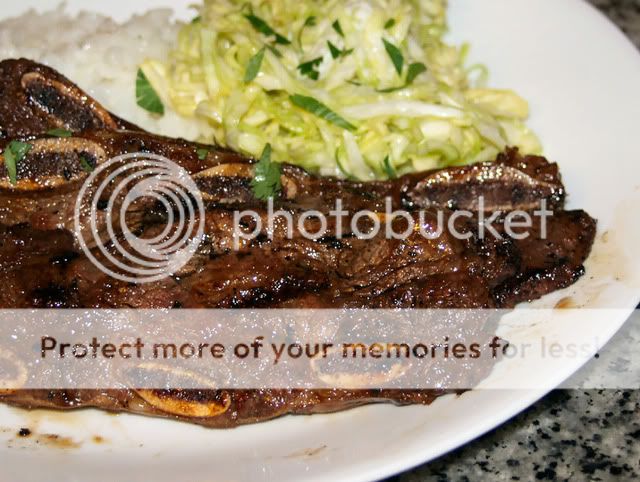Well, time for something else. I really like to have pulled pork with slaw, but, over the years my taste has inexplicably changed from liking a really heavy mayo slaw to something with a little more bite. Traditionally, the Osechi meal has a lot of pickled, fermented and cured vegetables served alongside the rice and stews. My family has often eaten these various pickles along with a marinated cabbage slaw. While Mirin-zuke, Takuan and Rakkyo are common as well, I though for this post to go with out quick tsunemono recipe, essentially a salt/sugar pickle.
Landarc's Tsunemono
1 cup rice vinegar
1/2 cup cider vinegar
2 tablespoons sugar
1 to 2 teaspoons shoyu
3 tablespoons salt (1T fine sea salt, 2T kosher salt, yes it matters)
1 large cabbage, medium-fine shreds
2 medium or 3 small carrots, fine shreds
Combine kosher salt with cabbage and carrots, lightly massage the salt into the vegetables and let sit for 20 minutes. Then thoroughly rinse and spin dry in a salad spinner. Combine the first four ingredients and the 1T of fine sea salt, stir to combine, a little heat help a lot. Add to the cabbage/carrot mix toss to combine and place in a large plastic ziploc bag. Press out the air and place in a pot, put a plate over the cabbage and weight with a can of soup, or beans or whatever, it doesn't really matter what is in the can. Let sit overnight. This will 'pickle' the vegetables.
Variations...
Hawaiian - I have had this with harusame (potato starch noodles), fake crab and pineapple

Just kidding, no pineapple, that was for Keale.
American - add fruit such as raisins, apple or pineapple (yes, really)
American of Japanese ancestry - small shrimp, harusame, sesame seed
Truth be told, this stuff is great with pulled pork on a sandwich. Add a little vinegar sauce to the mix and it works incredible with pulled pork.
In this image, the salad is in the background (duh

)







